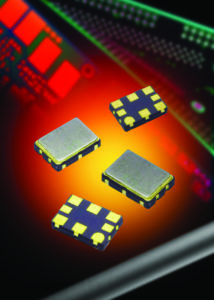 Euroquartz introduces the benefits of rapid turnaround oscillators in applications where time is tight or stock is scarce.
Euroquartz introduces the benefits of rapid turnaround oscillators in applications where time is tight or stock is scarce.
It is important to understand what a fast turnaround oscillator is and what distinguishes it from a standard factory-manufactured part. Normally, fast turnaround implies a factory-programmed oscillator that can be set to virtually any desired frequency. However, there are two types of fast turnaround oscillator, the first is a part programmed in a similar fashion to an EPROM and the second is a factory-configured device.
The distinction may not be immediately obvious, but a factory-configured part requires some selection of componentry and specific links to be hard-wired to achieve the desired frequency output and specifications. A programmed type uses software to input the desired frequency. Each
type has different advantages and disadvantages as detailed below.
The obvious advantage of a rapid turnaround product is the availability of any function and frequency within five to 15 working days depending on specification and available production capacity. This means an engineer can try several non-standard frequencies to benchmark a design and reduce development time. They are also useful for quickly filling production shortfalls, especially if supply chain delays appear.
Are there disadvantages to fast turnaround product? Yes. For example, for a standard clock oscillator, jitter and current parameters tend to be higher for a factory-configured device compared with a frequency specific oscillator.
This is because fast turnaround product uses a base crystal from which all frequencies are derived via multipliers and dividers. A factory produced component uses a crystal tuned at the desired frequency, delivering much improved jitter and current performance.
Another factor is cost, with software programmed units tending to be significantly more expensive. However, for samples and development, this isn’t usually a barrier. Advances in semiconductor engineering offer more formats such as current mode logic (CML) and high speed current steering logic (HCSL) and in much higher frequencies meaning these are usually configured units. The Euroquartz range, for example, offers frequencies up to 2.1GHz.
The latest products added to the fast turnaround range (factory-configured and programmable) offer extremely good jitter performance and operational characteristics.
Rapid turnaround crystal oscillators (XO) are not restricted to simple clocks but are also available in temperature compensated (TCXO), voltage controlled (VCXO), low voltage differential signalling (LVDS), positive emitter coupled logic (PECL) and the aforementioned HCSL and CML formats.
Provided the specification differences between factory-made and programmed or configured units are considered this range of parts offers a workable solution in time-sensitive applications.
